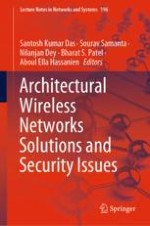This book presents architectural solutions of wireless network and its variations. It basically deals with modeling, analysis, design and enhancement of different architectural parts of wireless network. The main aim of this book is to enhance the applications of wireless network by reducing and controlling its architectural issues. The book discusses efficiency and robustness of wireless network as a platform for communication and data transmission and also discusses some challenges and security issues such as limited hardware resources, unreliable communication, dynamic topology of some wireless networks, vulnerability and unsecure environment. This book is edited for users, academicians and researchers of wireless network. Broadly, topics include modeling of security enhancements, optimization model for network lifetime, modeling of aggregation systems and analyzing of troubleshooting techniques.
